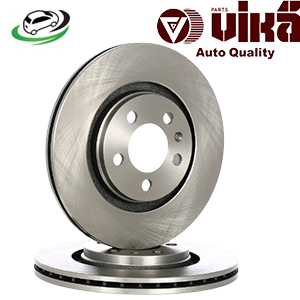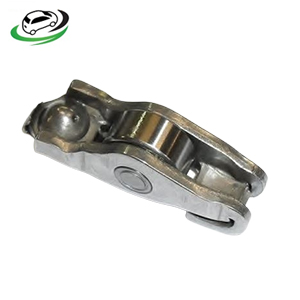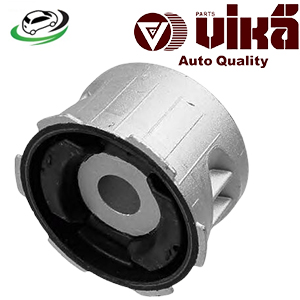-12%
Get Front Subframe Bushing AUDI Q7 2007-2015 / VW Touareg 2005-2018 7L0499035
Subframe bushings are critical components in a vehicle’s suspension system, playing a vital role in isolating vibrations, reducing noise, and providing a smooth and controlled ride. These bushings connect the subframe to the vehicle’s chassis, allowing for some flexibility while maintaining stability. Understanding the function, types, benefits, common issues, and maintenance of subframe bushings is essential for appreciating their impact on vehicle performance and comfort.
Structure and Function of Subframe Bushings
Subframe bushings are typically made from rubber, polyurethane, or a combination of materials, and they serve as the interface between the subframe and the chassis.
Components of a Subframe Bushing
- Inner Sleeve: A metal sleeve that fits around the mounting bolt.
- Bushing Material: The main body, usually made of rubber or polyurethane, which absorbs vibrations and provides cushioning.
- Outer Sleeve: A metal sleeve that fits into the subframe mounting point.
Function in Suspension System
The primary function of subframe bushings is to isolate the subframe from the vehicle’s chassis, allowing for controlled movement and reducing the transmission of vibrations and noise. They absorb shocks and impacts from the road, preventing them from being directly transmitted to the vehicle’s occupants.
Types of Subframe Bushings
Subframe bushings come in various types, each suited to different driving conditions and performance requirements.
Rubber Bushings
Rubber bushings are the most common type, known for their excellent vibration isolation and noise reduction properties. They provide a comfortable ride and are typically used in passenger vehicles.
Polyurethane Bushings
Polyurethane bushings offer greater durability and performance compared to rubber bushings. They are stiffer, which can improve handling and responsiveness, making them popular in high-performance and off-road vehicles.
Solid Bushings
Solid bushings, made of metal or other rigid materials, are used in racing and high-performance applications where maximum rigidity and precision are required. They provide minimal flexibility, resulting in sharper handling at the cost of increased noise and vibration.
Benefits of Subframe Bushings
Subframe bushings offer numerous benefits that enhance vehicle performance, comfort, and safety.
Vibration Isolation
One of the primary benefits of subframe bushings is their ability to isolate vibrations from the road, preventing them from being transmitted to the vehicle’s occupants. This results in a smoother and more comfortable ride.
Noise Reduction
Subframe bushings also play a crucial role in reducing road noise and harshness. By absorbing and dampening vibrations, they minimize the noise that enters the cabin, enhancing overall driving comfort.
Improved Handling
High-quality subframe bushings can improve vehicle handling by providing a stable connection between the subframe and the chassis. This stability enhances steering response and overall control, especially during cornering and maneuvering.
Longevity and Durability
Modern subframe bushings are designed for durability, often featuring advanced materials that resist wear and tear. This longevity reduces the need for frequent replacements and maintenance, contributing to overall vehicle reliability.
Common Issues and Maintenance of Subframe Bushings
While subframe bushings are designed for durability, they can experience wear and tear over time. Regular inspection and maintenance are crucial for ensuring their proper function.
Signs of Worn Subframe Bushings
- Clunking Noise: A clunking or knocking noise when driving over bumps or during acceleration and braking can indicate worn bushings.
- Poor Handling: Decreased steering response or increased body roll during cornering can be signs of bushing wear.
- Vibration and Noise: Increased vibration and noise in the cabin, especially from the rear of the vehicle, can indicate failing bushings.
- Visible Damage: Cracks, splits, or other visible damage to the bushings suggest they need replacement.
Maintenance Tips
- Regular Inspection: Periodically inspect the bushings for signs of wear, damage, or deterioration.
- Replacement: Replace worn or damaged bushings promptly to maintain suspension integrity and performance.
- Choose the Right Material: Select bushings made from materials that suit your driving conditions and performance needs.
- Professional Installation: Ensure bushings are installed correctly, preferably by a professional, to avoid alignment issues and premature wear.
Advances in Subframe Bushing Technology
Modern advancements in subframe bushing technology have led to improved performance, durability, and ease of maintenance.
Enhanced Materials
The use of advanced materials, such as high-strength rubber compounds and polyurethane blends, enhances the strength and longevity of subframe bushings. These materials are designed to withstand the stresses of driving while providing consistent performance.
Improved Design
Innovative bushing designs, such as those with voids or slots, allow for better vibration absorption and flexibility. These designs improve ride comfort and handling by providing a more tailored response to road conditions.
Hybrid Bushings
Hybrid bushings, combining rubber and polyurethane or other materials, offer a balance between comfort and performance. These bushings provide the benefits of both materials, enhancing overall driving experience.
Follow us on Facebook for more parts.



